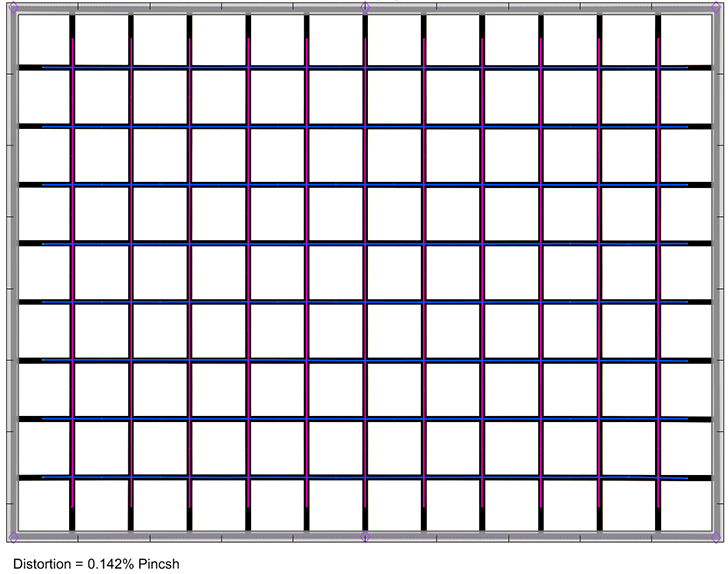|
Olympus M.Zuiko 45mm f/1.2 PRO - Review / Test Report - Analysis |
|
Lens Reviews -
(Micro-)Four-Thirds
|
|
Page 2 of 3

Distortion
Unlike many MFT lenses, the Olympus M.Zuiko 45mm f/1.2 PRO is fully corrected meaning that it doesn't rely on digital auto-correction for distortions. There's just a tiny hint of pincushion distortion even in RAW mode which is negligible.

Vignetting
Image auto-correction can be useful when it comes to vignetting. In RAW mode, the light falloff can reach just under 1EV (f-stops) at f/1.2. While this can be visible in certain scenes it is nothing when compared to full lenses (on full format cameras). Stopping down to f/2.8 reduces this to irrelevant levels. With activated image auto-correction there's nothing to worry about other than a slight increase in corner noise.

MTF (resolution)
The resolution characteristics of the Olympus M.Zuiko 45mm f/1.2 PRO is awesome. The center is extremely sharp at f/1.2 already and the borders/corners are also superb. Stopping down doesn't really improve the quality much more. Technically there's a slight peak of outstanding quality around the f/2 to f/2.8 marks. Diffraction is limiting the performance beyond but you can happily shoot till f/8 without sacrificing too much quality.
The field curvature is marginal. The centering quality of the tested sample was excellent.
Please note that the MTF results are not directly comparable across the different systems!
Below is a simplified summary of the formal findings. The chart shows line widths per picture height (LW/PH) which can be taken as a measure for sharpness.
If you want to know more about the MTF50 figures you may check out the corresponding Imatest Explanations

Chromatic Aberrations (CAs)
Lateral CAs are generally well-controlled at around 0.5px on the average at the image borders.

Bokeh
In its marketing material, Olympus is proudly emphasizing the lens' ability to produced a "feathered" bokeh. This is referring to the way out-of-focus highlights are rendered. If those highlights are "feathered", the brightness of the highlight discs fades towards the edges of the discs.
As you can see below the highlights have indeed a very fuzzy edge transition making it one of the best conventional (non-STF) lenses that we have seen so far in this respect.
 The general rendition of out-of-focus elements in the focus transition zones is also very smooth. Top-notch marks for Olympus here!
The general rendition of out-of-focus elements in the focus transition zones is also very smooth. Top-notch marks for Olympus here!
 The circular shape of the highlights deteriorates the more you move to the image corners and the Olympus lens is no exception here (technically this is a vignetting effect from the lens opening). Still, the results remain pleasing at f/1.2. Stopping down transforms the disc shape but it takes till at least f/2.8 till the discs are also circular in the outer image field. Please note that this is a normal effect.
The circular shape of the highlights deteriorates the more you move to the image corners and the Olympus lens is no exception here (technically this is a vignetting effect from the lens opening). Still, the results remain pleasing at f/1.2. Stopping down transforms the disc shape but it takes till at least f/2.8 till the discs are also circular in the outer image field. Please note that this is a normal effect.
Bokeh Fringing / LoCA
Boheh fringing (sometimes referred to as LoCA) is an axial color fringing effect with purplish halos in front of the focus point and greenish beyond.
Unsurprisingly, the Olympus M.Zuiko 45mm f/1.2 PRO is showing some traces at large aperture settings but the issue isn't extreme and mostly gone from f/2 onward.
You may also notice that there's no focus shift when stopping down.
|